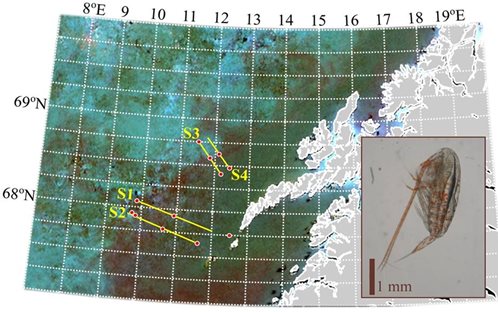Basedow et al. (2019) Scientific Reports has published the first satellite observations of “super swarms” of the zooplankton Calanus finmarchicus that cause seawater to turn pink/red and are commercially harvested as a source of Astaxanthin and Omega 3. The research was conducted on research cruises in 2017 and 2018.
The UK PI noted that “Ocean colour imagery provided by NEODAAAS has been crucial in further establishing the influence of high zooplankton concentrations, on the spectral distribution of the remote sensing signal. Most importantly, the provision of Near Real Time support by NEODAAS was absolutely crucial in enabling the field survey effort to pinpoint the location of these transient swarms and to effectively direct in situ effort to quantify the magnitude and composition of the swarms.”
Basedow et al. (2019) has established the opportunity to remotely monitor this environmentally and economically important class of animals. This has already resulted in the awarding of further funding from the Norwegian Research Council (Stressor project) that is helping to support a new PhD student based at the University of Strathclyde and working with UiT in Tromsø and SINTEF in Trondheim.

Figure 1. Sampling transects and Calanus finmarchicus. Image credit: David McKee, university of Strathclyde